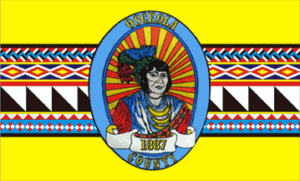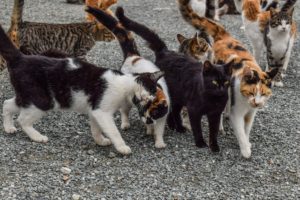Definition and examples of Community Cats
Community Cats are accustomed to being outside, many being born and living their entire lives outside. They can be friendly but may also run from people. Most will become aggressive if cornered or threatened. They include owned pets that may have been left to fend for themselves when a family moves. Although people should never leave pets behind, this does occur and these cats will often join an existing group of cats. You will see a wide variety of cats in the community including males, females, adult, juveniles, newborn kittens, short hair, long hair, feral, friendly, and everything between.
These cats must have a caregiver, someone who is feeding and monitoring the group and also helping to get them spayed/neutered, vaccinated, and returned to the community. Caregivers are not owners which is why we refer to them as “community cats.”
Osceola County Community Cat issues
We estimate that we have between 50,000-60,000 Community Cats in Osceola County. Given this number, there are many concerns that come to mind not the least of which is that cats are very prolific with females having 2-3 litters each year and four kittens being an average sized litter. It is easy to see how we got to this number of Community Cats.
Having out of control cat populations leads to more nuisance complaints, animal suffering, and disease. This is why we support TNVR in Osceola County. This is the only known practice that over time helps to reduce the number of community cats in a given area.

TNVR
TNVR saves cats’ lives.
Trap-neuter-vaccinate-return (TNVR) entails trapping, neutering, vaccinating, and returning community cats to their original outdoor locations. It is not only the most humane method of preventing cats from entering the shelter system, it’s the most effective. It has been proven that the old method of control, destroying the animals, does not work because new feral cat colonies just move in to that location, perpetuating the problem.
TNVR also ensures the cats’ health and welfare. Once these cats are sterilized and vaccinated, they can live healthy, happy lives in their communities, where caring residents look out for them. Sterilization and vaccination provide a public health benefit to the community, too, a vast improvement over the failed trap-and-kill approach that’s been used for generations.



